Abstract
Excitability changes following a nerve impulse were studied in the rat tail. Supernormal nerve excitability in control animals was present, as in other vertebrate nerve fibres, from 4-30 ms and was followed by a period of subnormal excitability extending up to 100-200 ms. Two to seven hours after intravenous administration of 1.5 mg/kg deltamethrin, supernormality was increased in degree and prolonged in duration for up to 400 ms. A minor effect was still detectable 24 hours after injection. This effect of deltamethrin on nerve excitability is probably due to persistent slight depolarisation of the nerve membrane resulting from its known effect of maintaining a proportion of sodium channels open for up to several hundred milliseconds following a nerve impulse.
Full text
PDF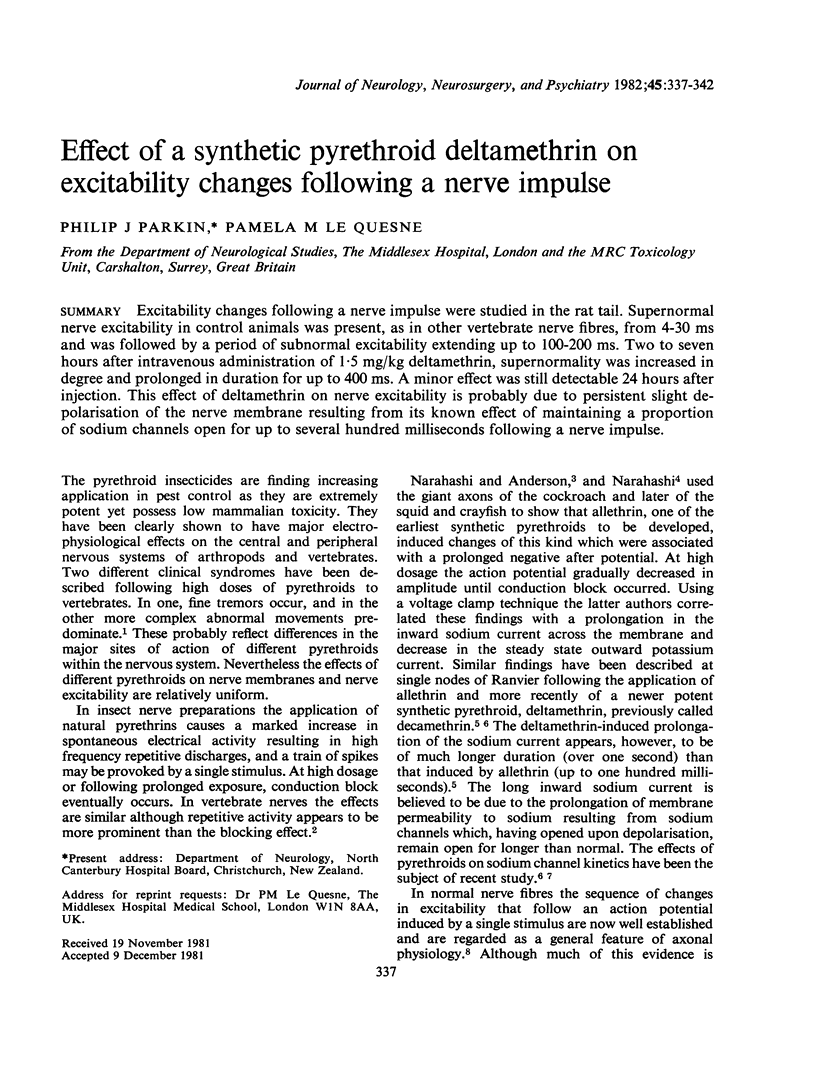
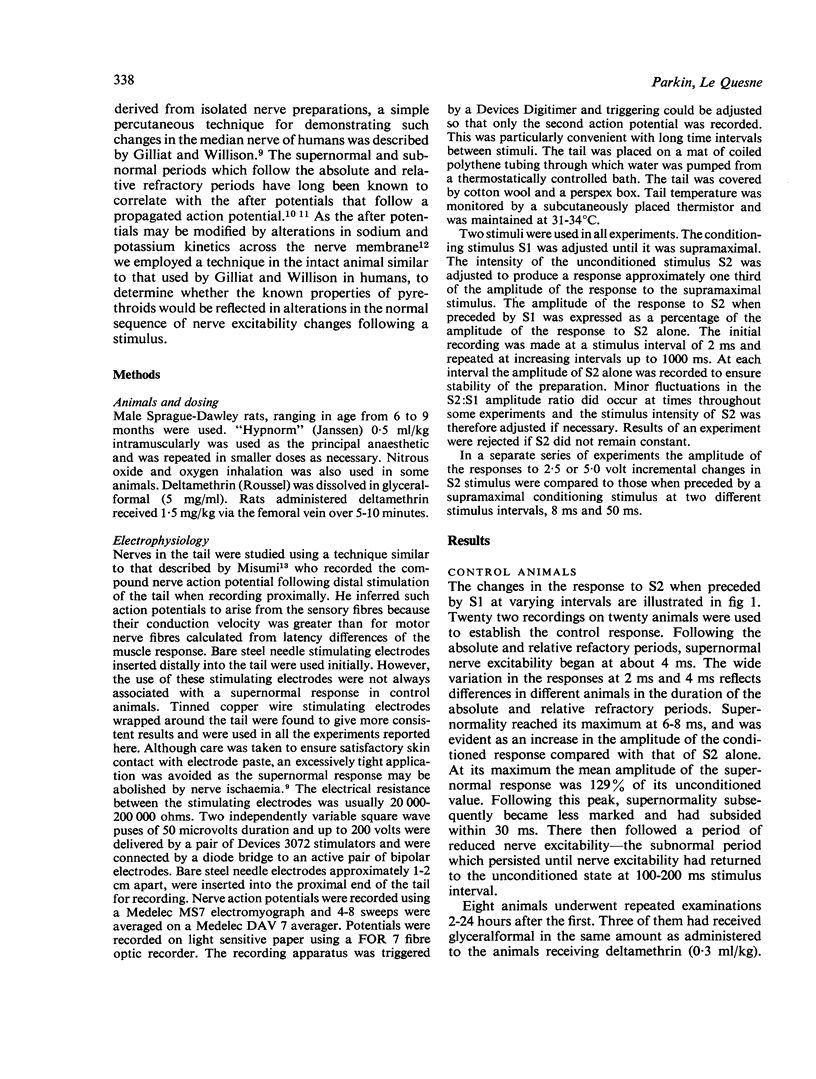
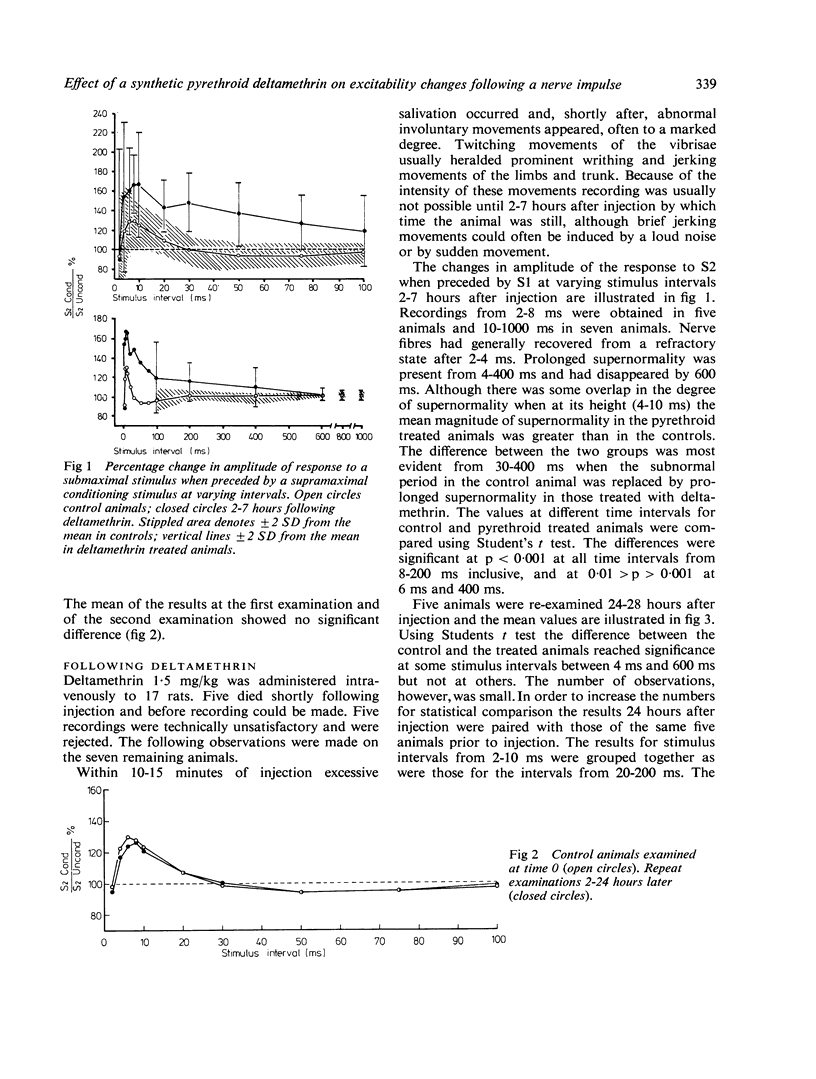
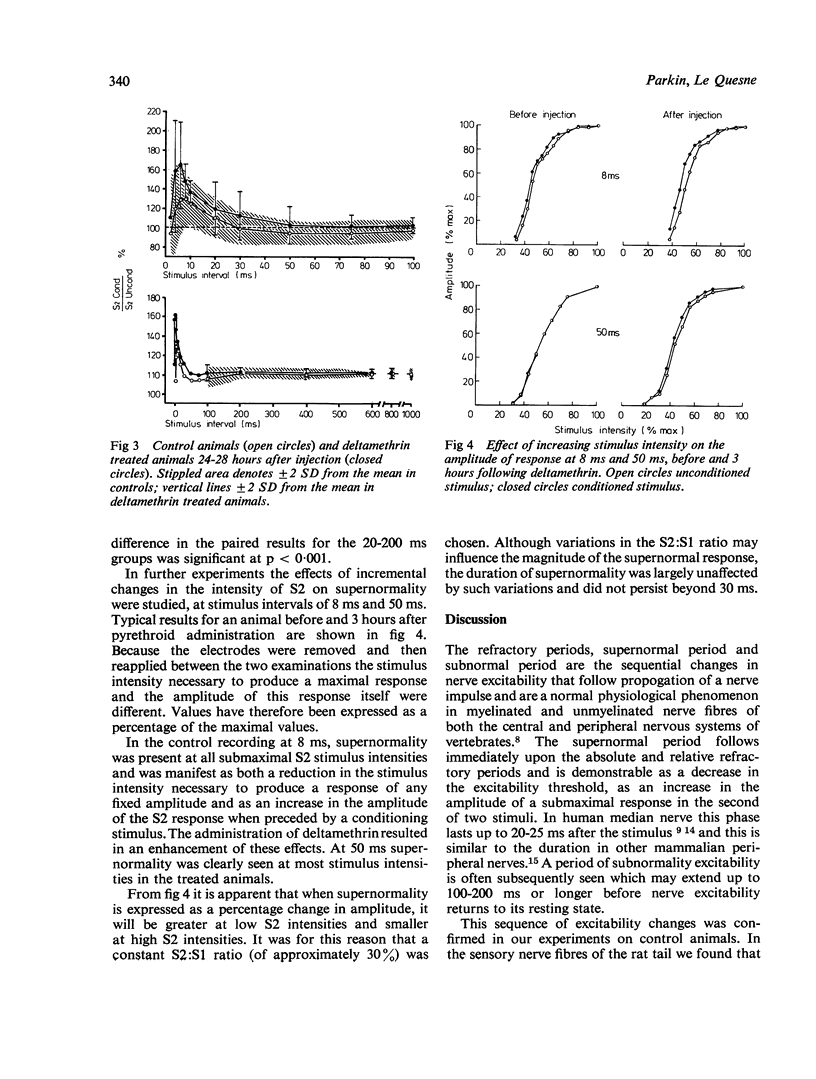
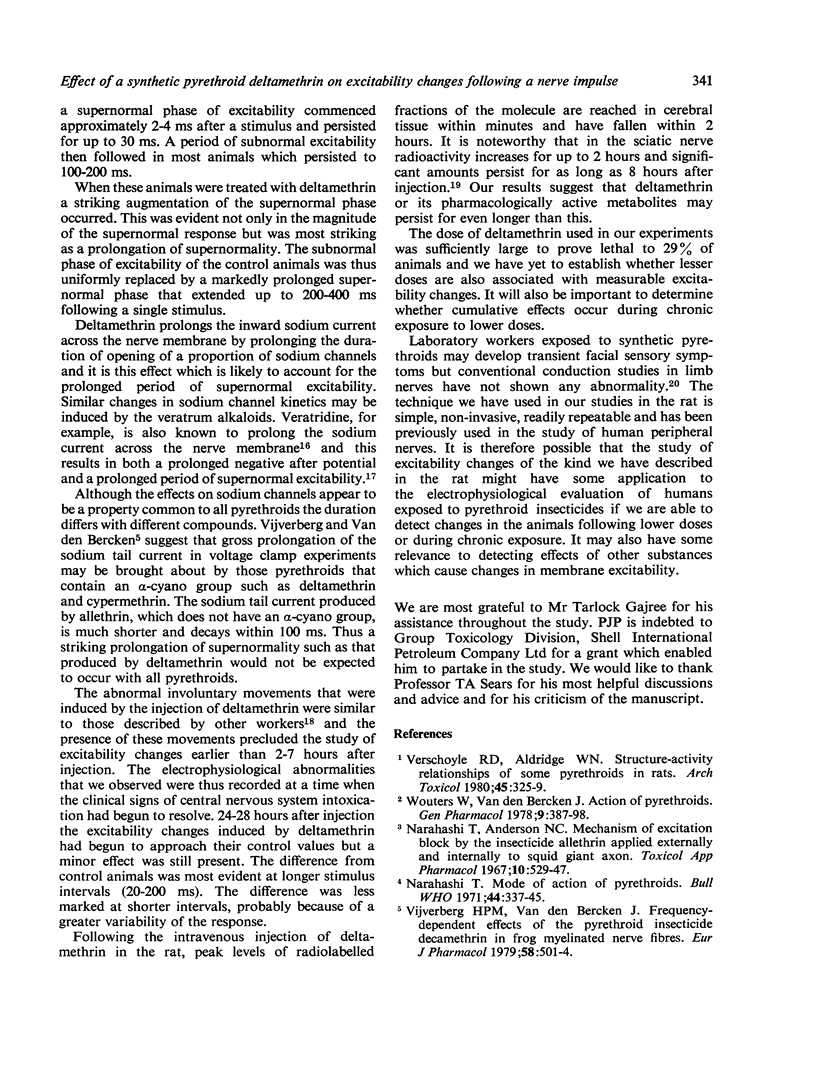
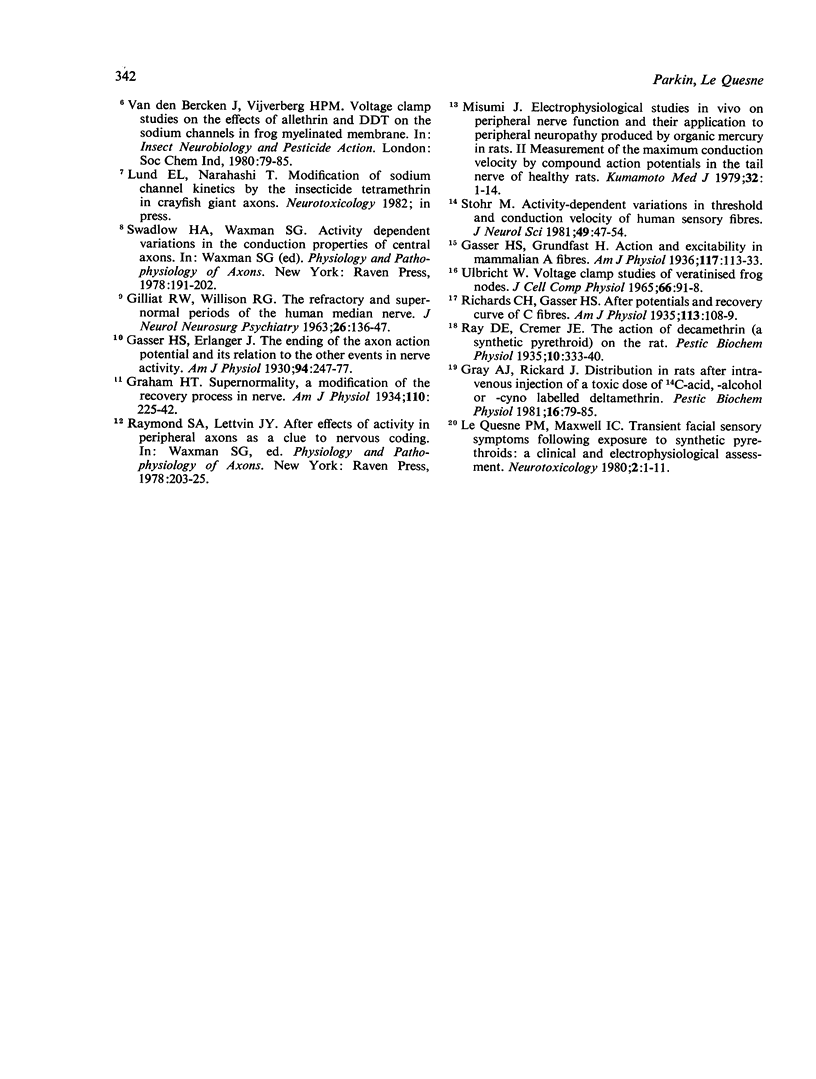
Selected References
These references are in PubMed. This may not be the complete list of references from this article.
- GILLIATT R. W., WILLISON R. G. The refractory and supernormal periods of the human median nerve. J Neurol Neurosurg Psychiatry. 1963 Apr;26:136–147. doi: 10.1136/jnnp.26.2.136. [DOI] [PMC free article] [PubMed] [Google Scholar]
- Le Quesne P. M., Maxwell I. C., Butterworth S. T. Transient facial sensory symptoms following exposure to synthetic pyrethroids: a clinical and electrophysiological assessment. Neurotoxicology. 1981 Jan;2(1):1–11. [PubMed] [Google Scholar]
- Narahashi T., Anderson N. C. Mechanism of excitation block by the insecticide allethrin applied externally and internally to squid giant axons. Toxicol Appl Pharmacol. 1967 May;10(3):529–547. doi: 10.1016/0041-008x(67)90092-0. [DOI] [PubMed] [Google Scholar]
- Narahashi T. Mode of action of pyrethroids. Bull World Health Organ. 1971;44(1-3):337–345. [PMC free article] [PubMed] [Google Scholar]
- Stöhr M. Activity-dependent variations in threshold and conduction velocity of human sensory fibers. J Neurol Sci. 1981 Jan;49(1):47–54. doi: 10.1016/0022-510x(81)90187-8. [DOI] [PubMed] [Google Scholar]
- Verschoyle R. D., Aldridge W. N. Structure-activity relationships of some pyrethroids in rats. Arch Toxicol. 1980 Oct;45(4):325–329. doi: 10.1007/BF00293813. [DOI] [PubMed] [Google Scholar]
- Vijverberg H. P., van den Bercken J. Frequency-dependent effects of the pyrethroid insecticide decamethrin in frog myelinated nerve fibres. Eur J Pharmacol. 1979 Oct 15;58(4):501–504. doi: 10.1016/0014-2999(79)90325-x. [DOI] [PubMed] [Google Scholar]
- Wouters W., van den Bercken J. Action of pyrethroids. Gen Pharmacol. 1978;9(6):387–398. doi: 10.1016/0306-3623(78)90023-x. [DOI] [PubMed] [Google Scholar]


